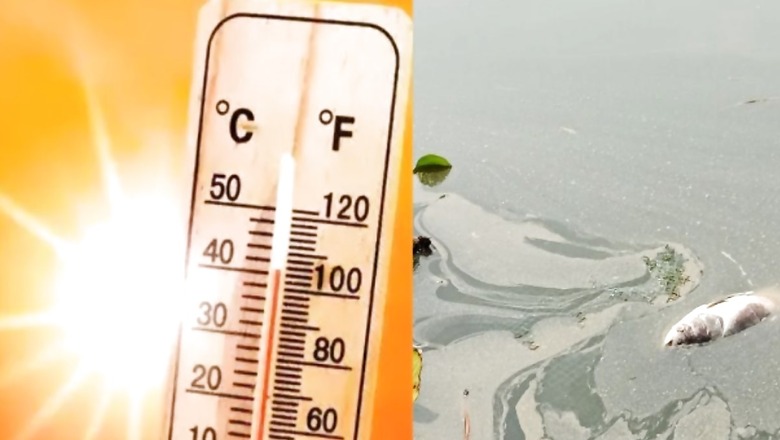
views
The rise in temperatures has made it difficult for people living in coastal regions to step out. The scorching sun rays, accompanied by hot winds in the afternoon, are posing a great ordeal for the residents. Presently, the temperatures are reaching a bar of 40 degrees Celsius, which has been majorly affecting the life of the locals. The situation has turned worse in Tamil Nadu’s Virudhunagar city. People expected that the summer heat would reduce as the period of Kathiri Veyil ended. Kathiri Veyil, also known as Agni Nakshatram, is when the sun passes over the star Krittika. This duration is known to be the hottest summer days.
But even after the conclusion of Kathiri Veyil, the sun continues to blaze furiously on the people of Virudhunagar. Not only people but the unbearable heat also seems to have started affecting the animals. While there are instances of water bodies getting dried up, fish are also dying in this terrible heat. Recently, dead fish were seen floating on the surface of water bodies in Virudhunagar’s Gulnoor market reservoir.
A video clip captured by News18 Tamil shows dead fish floating lifelessly in the waters, some are seen lying on the sand. A drought-like situation prevails in the area, with water levels significantly reduced. Wherever your eyes may wander, dead fish are lying all around.
The heartbreaking visual footage indeed paints a grim picture, reminding us of the wrath of nature. According to reports, locals have stated that more and more fish are dying due to increased temperatures.
Over the years there have been many examples of fish dying. The primary reasons are pollution, scorching temperatures, and simply ignorance by the concerned authorities. Earlier in 2016, schools of fish washed up dead on the banks of Bangalore’s Ulsoor Lake. As per the residents, the constant flow of sewage water into the Lake, and blistering heat, accompanied by high levels of nitrogen in the water has resulted in the deaths of the fish.
“Around 99 per cent of the dead fish belong to the Puntius ticto species, which is indigenous to the state and can grow up to four inches long. The slightly bigger ones are Labeo Rohita, also known as rohu, which are in very few numbers,” explained a former scientist, while analysing the situation.



















Comments
0 comment